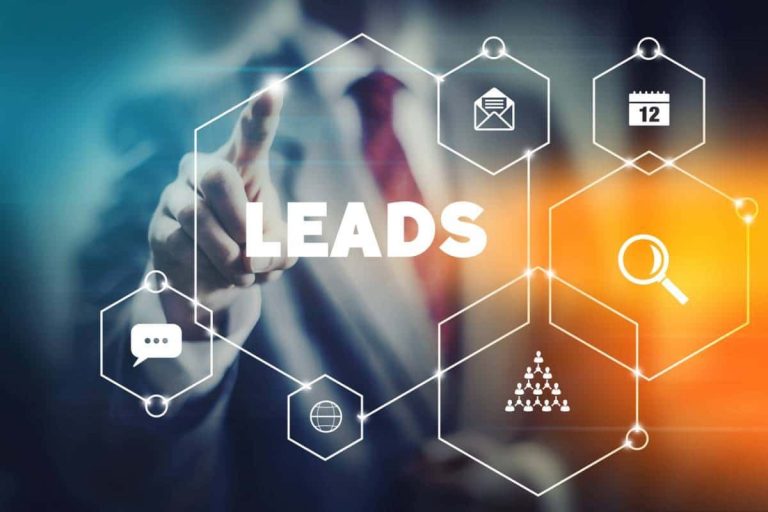Table of Contents
Introduction:
Understading B2B lead generation
B2B lead generation is the process of identifying, attracting, and nurturing potential clients who are likely to purchase your product or service. Unlike B2C, where the sales cycle can be short, B2B deals often involve:
- Multiple decision-makers
- Higher transaction values
- Longer evaluation periods
This means your strategy must be personalized, multi-channel, and trust-building.

Top B2B Leads generation channels
LinkedIn Outreach & Advertising: Use LinkedIn’s advanced targeting for industries, roles, and company sizes, and combine thought leadership posts with direct messaging.
Email Marketing: Segment your lists by buyer stage and provide personalized and value-packed emails rather than generic promotions.
Webinars & Virtual Events: Position your brand as a trusted advisor + gather registrant details for nurturing.
SEO & Organic Search: Optimize your website for industry-specific keywords + create evergreen content that attracts long-term traffic.
Using data & tech for better results

Tody’s B2B lead generation relies heavily on technology and data to find, engage, and convert the right prospects. Key tools include:
- CRM platforms (ex, HubSpot, Salesforce) to track pipelines, log interactions, and manage relationships.
- Marketing automation tools (ex, Marketo, ActiveCampaign) to nurture leads through personalized email sequences at scale.
- Analytics dashboards (ex, Google Analytics, Power BI) to measure conversion rates, campaign performance, and ROI.
- AI-powered tools for predictive lead scoring, personalized messaging, and identifying purchase intent signals.
How Data-Driven Insights Make the Difference
Data analysis enables marketers to:
Identify high-performing channels : discovering LinkedIn Ads deliver 3× the ROI of cold email campaigns.
Optimize campaigns in real time : adjusting ad creatives, targeting, or offers based on live performance data.
Focus resources on high-value prospects : prioritizing decision-makers most likely to convert, based on behavioral and firmographic data.
Example:
SaaS Company Using Data to Boost Leads
A SaaS provider integrates HubSpot with Google Analytics. They see that 65% of
demo requests come from LinkedIn Ads targeting CFOs. Using AI lead scoring,
they prioritize these leads in their CRM and launch tailored email campaigns.
Result: lead to customer conversion rate jumps from 12% to 23% in 4 months.
Case Study
Case Study: AtlasTech – Generating Qualified Leads in the Construction Sector
Industry : B2B Software – Project Management and Solutions for Construction Companies
Target Audience : Mid to large construction firms seeking to improve
project tracking and cost control
Challenge:
AtlasTech had a highly capable product but struggled to reach decision-makers
within construction companies. Traditional cold calls were ineffective, and
their website traffic consisted mostly of unqualified visitors.
Strategy Implemented:
1. Ideal Customer Profile (ICP) & Persona Mapping
o Identified key decision-makers: Operations Managers, Procurement Directors, and CFOs.
o Segmented audience by company size and project type.
2. Content Marketing
o Created downloadable “Construction Cost Overrun Report 2024” as a lead magnet.
o Produced short LinkedIn video testimonials from satisfied clients showing measurable savings.
3. LinkedIn Outreach Campaign
o Used LinkedIn Sales Navigator to identify targeted prospects.
o Sent personalized connection requests followed by value-based messages, not sales pitches.
4. Webinars for Lead Nurturing
o Hosted monthly webinars on “Reducing Project Delays with Digital Tools” in collaboration with an industry association.
o Captured attendee data and followed up with tailored emails.
5. Marketing Automation
o Used HubSpot to segment leads, score them based on engagement, and automate drip email campaigns.
Results After 6 Months:
- Inbound leads increased by 62%.
- Lead to opportunity conversion rate rose from 14% to 26%.
- Closed $1.8M in new contracts, mainly from webinar attendees and LinkedIn campaigns.
Success:
- Targeting the right people matters more than targeting a large audience.
- Value-driven content (reports, webinars) builds trust and authority.
- Automation + personalization shortens the B2B sales cycle.
